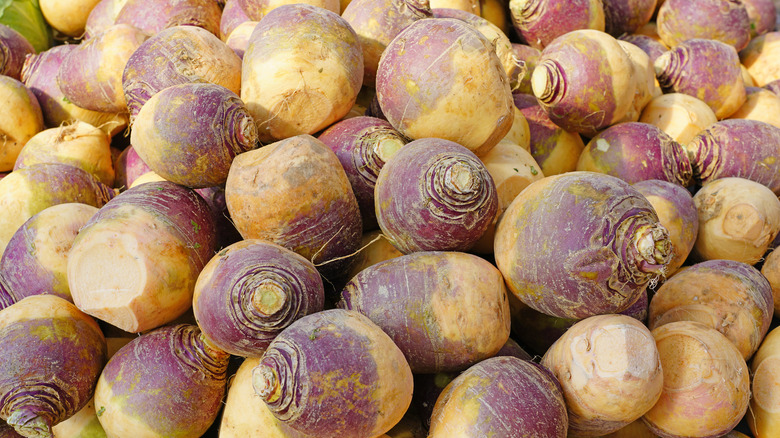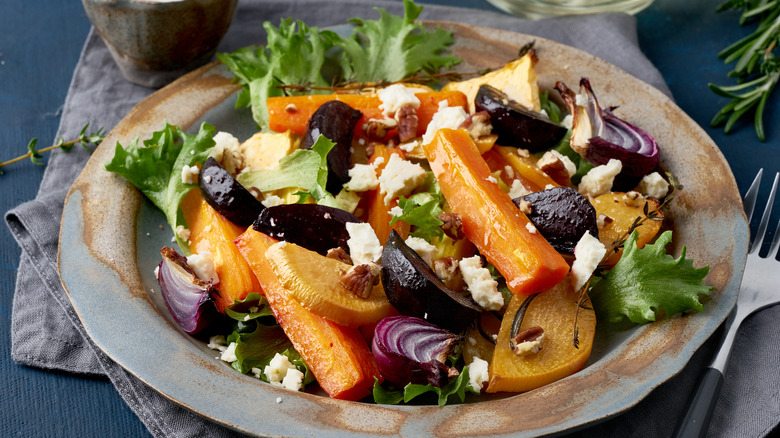The Real Reason You Should Include Rutabaga In Your Diet
Tired of your normal food routine and looking to switch it up with a new vegetable? Enter the rutabaga — a winter root vegetable that is a cross between a turnip and a cabbage.
Rutabaga has a distinct earthy smell and pungent flavor, but is milder than a turnip when raw and has a buttery sweet potato-like texture when cooked (via WebMD). For this reason, it may not be as popular as some of the vegetable trends. But their nutritional profile may change your mind, as rutabagas are chock full of vitamins, minerals, and antioxidants.
The best part? Rutabagas are low in calories and high in fiber, meaning they can help with your digestive health and weight loss. The vegetable can make you feel fuller for longer and prevent overeating, according to Healthline. They are also high in potassium, which helps your body regulate your blood pressure and decreases your risk of heart disease and stroke.
How rutabaga can help your body from the inside out
The antioxidants in rutabagas, like carotenoids and vitamins C and E, serve as a boost to your immune system to keep you healthy and fight diseases. Glucosinolates found in rutabagas have also shown to help fight cancer and reduce inflammation. And if the nutritional benefits haven't convinced you, maybe the anti-aging properties of rutabagas will. The high amount of vitamin C in rutabagas can serve as skin protection from UV damage, and is integral in creating and protecting collagen (via Healthline).
But there are some cases where you may want to limit the amount of rutabaga you consume. Since it is a cruciferous vegetable, it can be tough on the digestive system for those with irritable bowel syndrome, according to WebMD.
So how can you start adding rutabaga to your diet? Try it as an alternative to carbohydrates like potatoes. Their versatility allows you to serve them as fries, a puree, boiled and mashed, or roasted. Rutabagas are also a great addition to a salad or casserole.


